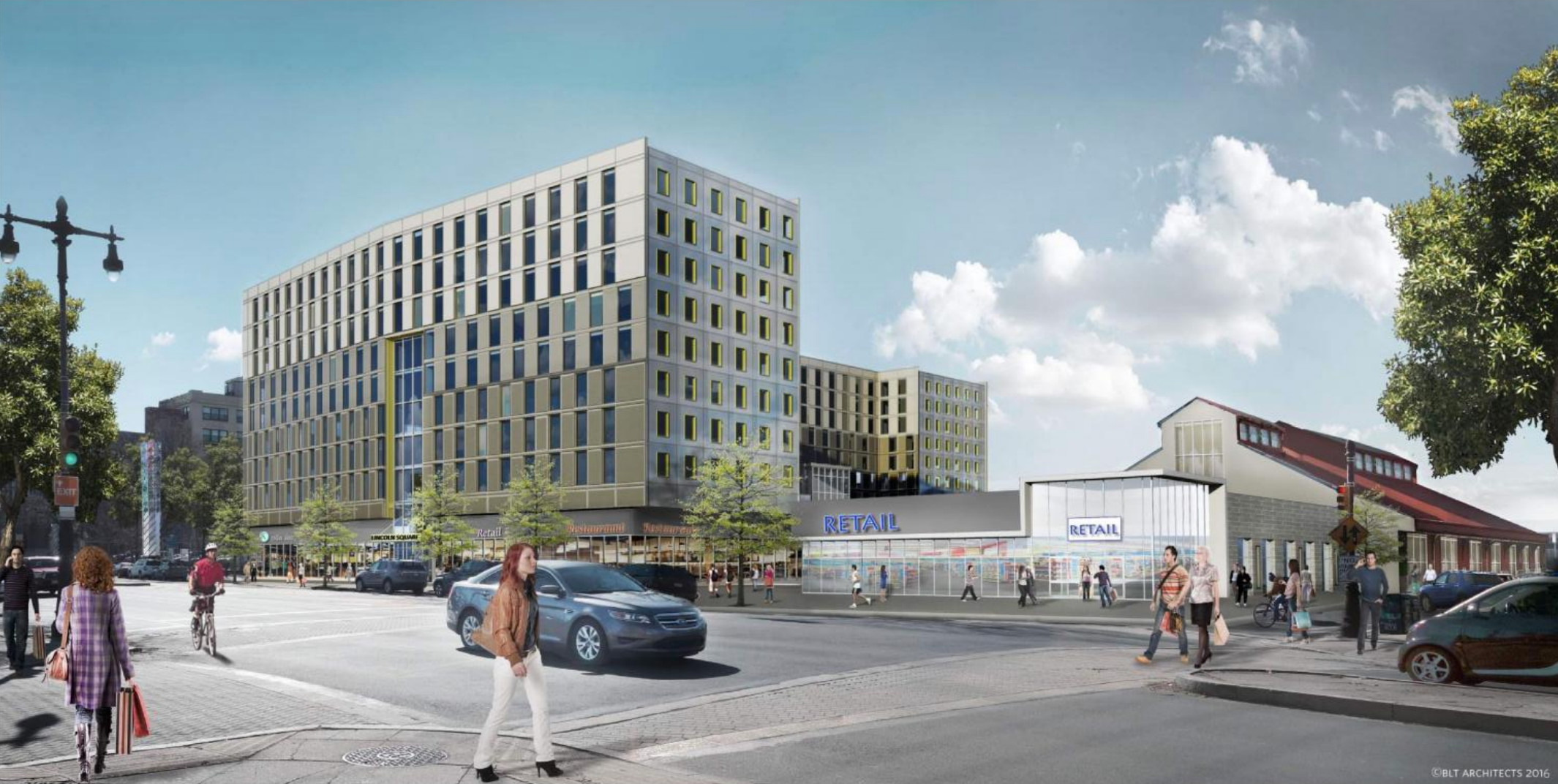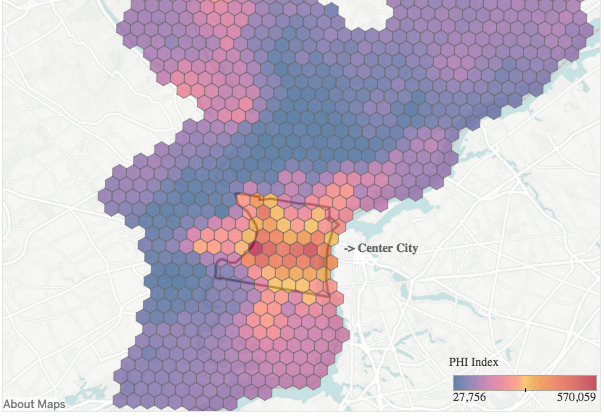Philly’s ever-expanding Center City


Greater Center City is now considered the area bounded by the two rivers and Girard Avenue on the north and Tasker Street to the south. That translates to an explosion of new apartments, condos and townhouses north of the Art Museum area and southwest of City Hall, writes Econsult Solutions in their latest Present Value blog post. “Back in 2000, the Center City East had the greatest density of higher valued single family homes, with a narrow corridor of higher valued homes moving west. By 2010, the center of gravity for the city’s highest PHI had moved west and also north towards the Art Museum area,” ESI writes. These days, the action is farther out —”thanks in part to the 300+ Lincoln Square apartment project at Broad and Washington, and another 360 single family homes currently under construction in that section of the city. To the north, nearly 1,900 new housing units—predominantly apartments but also condos and single family homes—are underway.
Meanwhile, Center City District, which relies on ESI data in their latest housing market report, cautions against getting too cocky about the city’s burgeoning skyline writes Jake Blumgart in an article published Thursday. The downtown business improvement districts argues that the growing downtown real estate market still needs to be nurtured to ensure its sustainability, especially in the context of slow regional growth.
“Rather than resent new investment, we should embrace it and put it to work for a broader public purpose,” CCD authors write in the latest report.
“What exactly is it that we are trying to save in Philadelphia?”
Confusion and quibbling ensued at a meeting of the city’s Preservation Task Force held on Thursday, writes Starr Herr-Cardillo, contributing to Hidden City. The sixth public meeting was primarily a “frustrated attempt to sort out the logistics of just how individual issues should be assigned and addressed by [task force] members of the group,” while “public comment was limited to 15 minutes at the end of the meeting,” Herr Cardillo wrote. Vice-chair Dominique Hawkins moderated the discussion, calling on members to “respond to basic, open-ended questions like ‘What are we preserving?’ and ‘What exactly is it that we are trying to save in Philadelphia?’ ” Attendees including the Preservation Alliance for Greater Philadelphia’s Paul Steinke raised concerns about transparency and public input, pointing to the members’ restricted delegation to one of four subcommittees and requesting an explanation for why a subcommittee studying preservation outcomes is closed to the public and other members of the Task Force. All and all, Herr-Cardillo lamented “the general disorganization and lack of focus on more substantive discussion,” and the missed opportunity and promise of the task force.
The task force released this week the first of its three reports, a review of how preservation presently works in Philadelphia, which will be the foundation for recommendations it makes to the city by the end of the year. Ashley Hahn spoke with ten task force members, on the condition of anonymity, for Eyes on the Street. Looking at the white paper as well as the task force’s first year, Hahn concludes that “the task force’s work should require an earnest reckoning with the idea that Philadelphia has a preservation problem — or many. But naming that problem has proved challenging.”
Nanotech, the new pothole killer?
Philadelphia, along with cities across the country, is “losing the war against potholes,” writes Malcolm Burnley, contributing to WHYY’s The Pulse. One possible savior to smooth the roads in this “pothole apocalypse” could be nanotechnology. How, you might ask? The secret’s in the mix: “asphalt” pavement, as we know it, is made up of 5 percent asphalt and 95 percent rocks, according to Zhanping You, a civil engineer and researcher at Michigan Tech who has studied asphalt for decades. And, because asphalt, which is a derivative of crude oil, “tends to liquify in hot temperatures and turn brittle in the cold,” this nor’easter also meant pothole hell. You’s research team has found that adding “nano-clay” to a traditional asphalt mixture can improve durability, with tests showing that “we can improve the rutting resistance by half.” Burnley also looks at adding microscopic fragments of steel wool to the mix, which scientists hope creates a ‘self-healing asphalt’ that has the “potential to create asphalt that re-melts with the application of an external heat source.”
Be that citizen planner you always wanted to be
PSA: Applications to join the latest Citizens Planning Institute cohort is March 21st! The bi-annual course, run by Philadelphia City Planning Commission, aims to educate residents on how to effectively make their voice heard in the zoning and development processes shaping their communities. 450 Philadelphians have graduated from this program since 2010. Get thee, thy neighbors, and thy community group members to the application here.
WHYY is your source for fact-based, in-depth journalism and information. As a nonprofit organization, we rely on financial support from readers like you. Please give today.







